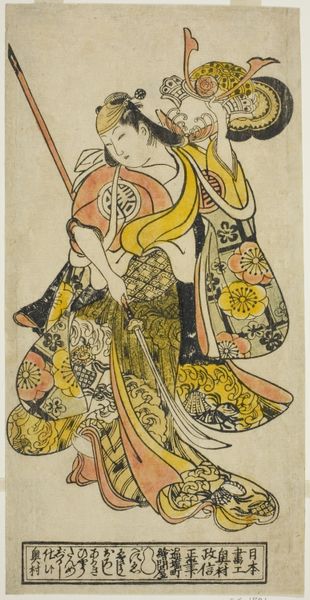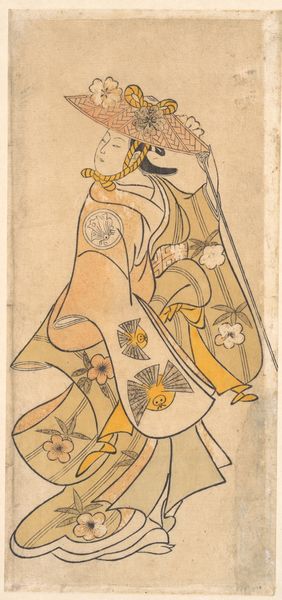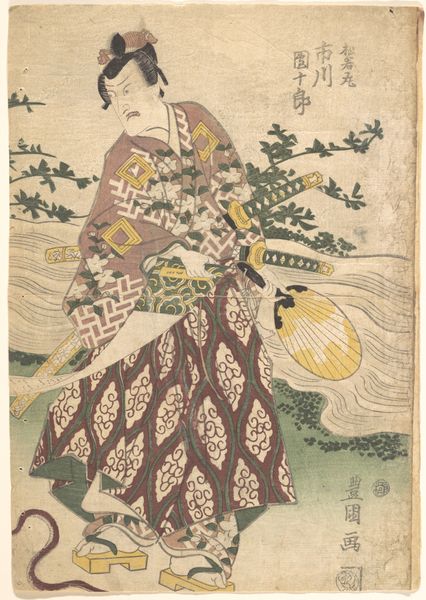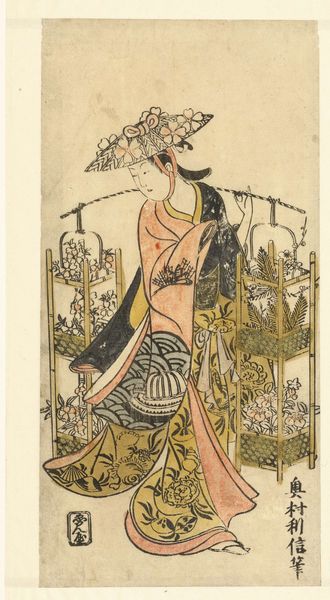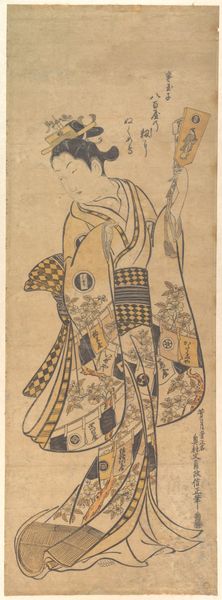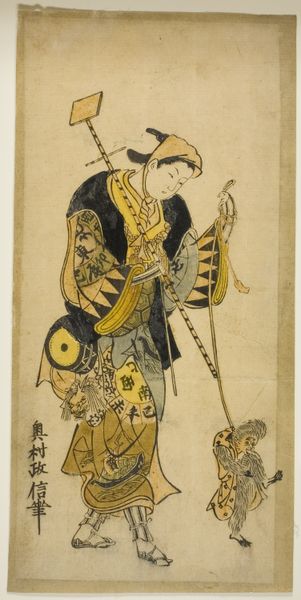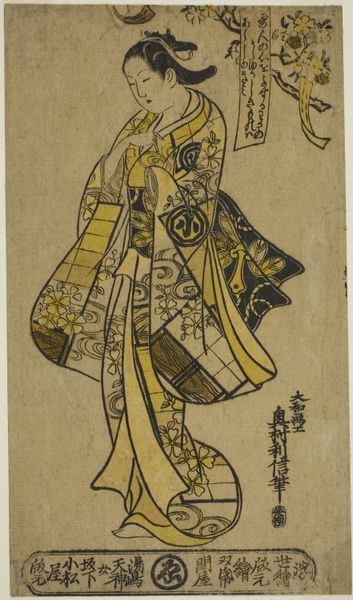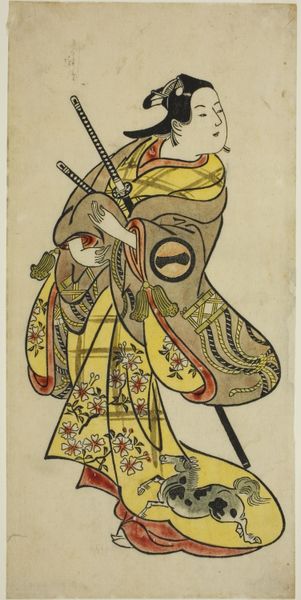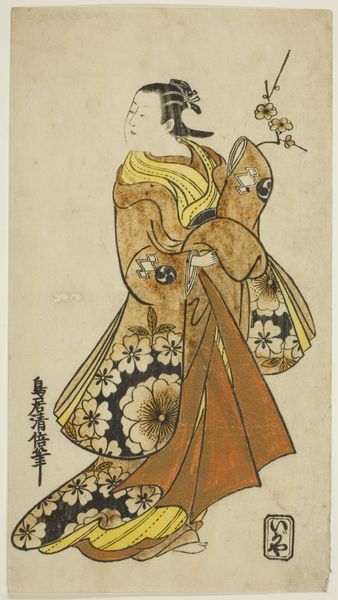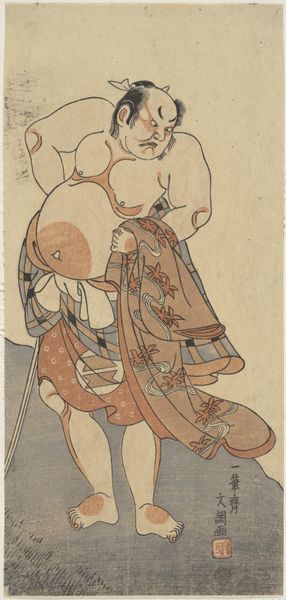
print, woodblock-print
#
portrait
# print
#
asian-art
#
ukiyo-e
#
figuration
#
woodblock-print
#
line
#
sword
Dimensions: H. 11 in. (27.9 cm); W. 4 7/8 in. (12.4 cm)
Copyright: Public Domain
Curator: Let’s turn our attention to "Actor as a Samurai Youth," a woodblock print by Torii Kiyotada dating back to around 1725-1745. It’s part of the Metropolitan Museum of Art’s collection. Editor: My initial response is that there's an interesting contrast here. Despite the traditional associations with samurai, this figure comes across as rather contemplative and serene. Is it typical of this art period? Curator: Well, this piece falls into the ukiyo-e tradition, the "pictures of the floating world.” The focus was very often on the ephemeral—beauties, actors, scenes of everyday life, capturing the fleeting moment. It reflects the vibrant urban culture of Edo-period Japan. The symbols and design on the robes, the sword itself, speaks volumes about identity and representation. Editor: Exactly! That costuming and iconography point to performance itself—this isn't simply a samurai, but an actor playing one. Considering the social hierarchies and the rigid class structures of that era, do you see this image offering any type of commentary, subtle subversion, or an interesting challenge to societal roles? Curator: I think there's certainly room for that reading. The samurai, regardless of his rank or social standing, embodied bravery, honor, and loyalty, which are definitely loaded symbols. Representing a 'youthful' figure allows it a connection to a historical type, an idealized masculinity—and by casting an actor in that part, it comments on the performative aspects of identity, right? These works were disseminated across society and served to normalize visual and symbolic shorthands, but to what affect? Editor: The 'Actor as Samurai Youth' seems to me more than just an example of commercial portraiture. It becomes a potent visual articulation of identity construction, cultural memory, and perhaps, a delicate disruption within its socio-political context. Curator: It is a fine point, an excellent summary. Considering ukiyo-e, you have given it a more insightful appreciation. Editor: I think by highlighting these subtle nuances, this woodblock print encourages dialogue and new reflections about art's position, society, and gendered expression.
Comments
No comments
Be the first to comment and join the conversation on the ultimate creative platform.
